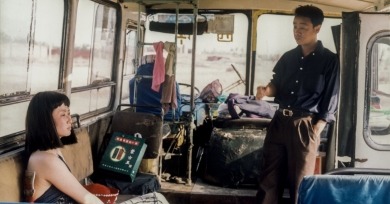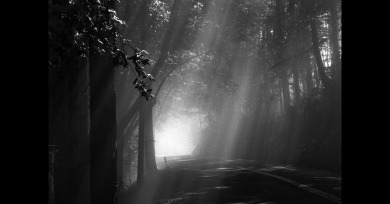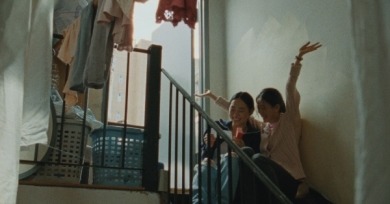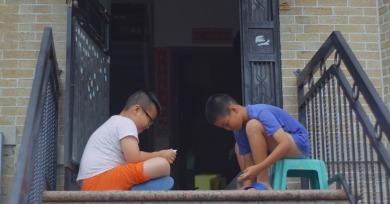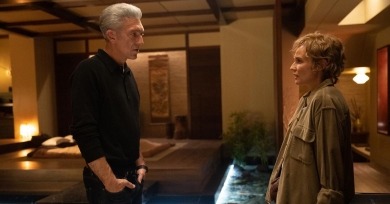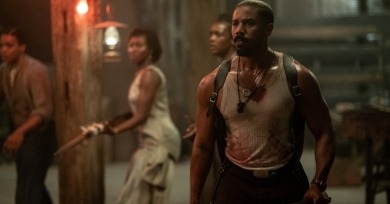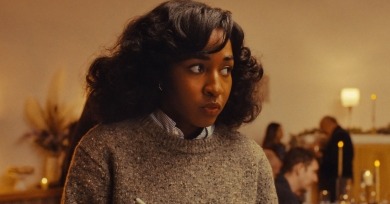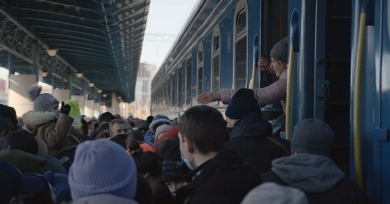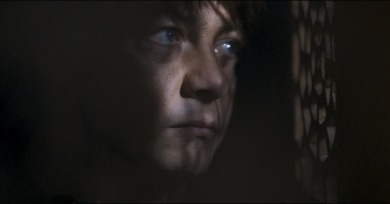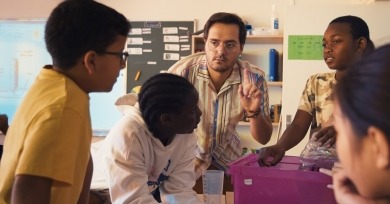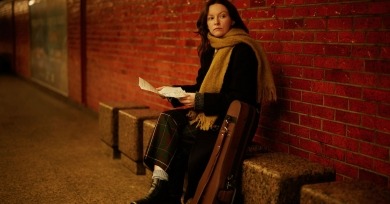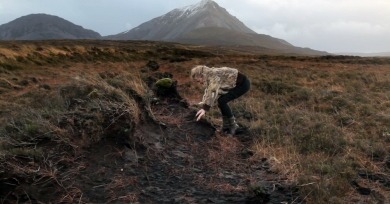Reviews
As Craig platonically courts his cool TV weatherman neighbor Austin with increasing sweaty neediness, you wait for the other shoe to drop and for the proceedings to turn ugly.
As the financial health of the film industry deteriorates, it will necessitate smaller crews, fewer shooting days, and various other constraints . . . Caught by the Tides represents a different kind of film that can emerge from unorthodox methods and stands as a testament to the medium’s long-term possibilities.
The often solitary experience of analog filmmaking, as exemplified by the landscape films of James Benning, Babette Mangolte, and Peter Hutton, necessitates a free-form style that takes into account the scope and contingencies of nature itself.
Blue Sun Palace represents a new aesthetic vernacular for stories of the New York City working class, betraying international inspiration more than Sundance-school neorealism.
In Emergent City, a documentary by Kelly Anderson and Jay Arthur Sterrenberg about the Brooklyn Sunset Park district, community comprises more than a group of people who live within designated boundaries; it is a living, breathing body.
Carrying on with the tradition of mingling eros with the abject, The Shrouds reimagines how we might visually regard our faithful departed.
If the vampire lore in Sinners does not quite cohere, a more compelling pattern unfolds. Coogler seems to recycle a premise he first staged in Black Panther: that no one who embraces the American project may escape its grotesque transformations.
Tensions between an old and new guard of writers feature in Opus, which twists the Almost Famous concept of a writer going on the road with enigmatic musicians into a horror-comedy embittered about the state of relations between artists and critics.
The result is less a collective narrative of the ongoing war than a collage of impressions and feelings that guide the viewer across geographical terrain and reveal a country’s citizens processing their trauma in wildly different ways.
For a tale of doomed love and excruciating loneliness, the sixth feature from Miguel Gomes is not powered by sorrow so much as an inordinate fondness for the world, a film where director and characters alike seem determined to find beauty in the most unexpected places.
The intention here was to make an erotic film without relying on or showing sexual acts. That was something I told myself from the very beginning: no one will make love this time.
The aesthetic looseness feels like an appropriate evocation of the anything-goes sensibility of childhood, as well as the pedagogical nature of the educational milieu.
Though Measures of a Funeral is a lushly photographed, globe-trotting saga that runs nearly two and a half hours, its bones are that of an essay film.
The more personal A Want in Her gets, the less it feels like a document constructed with a prospective viewer in mind, and so the result is edifying and intrusive in equal measure.

